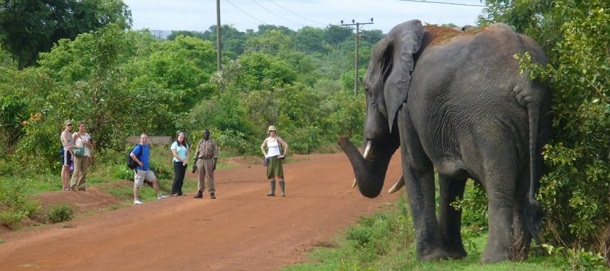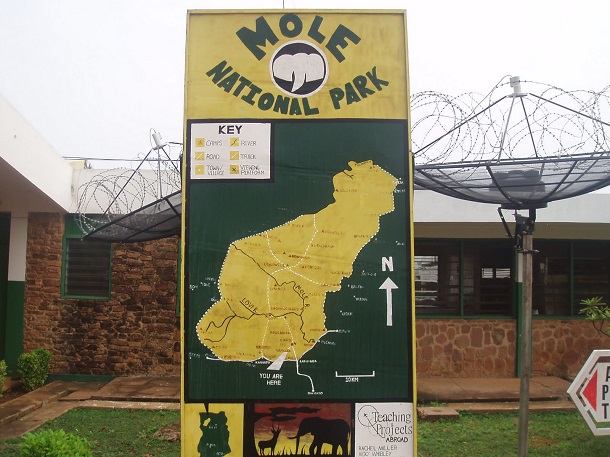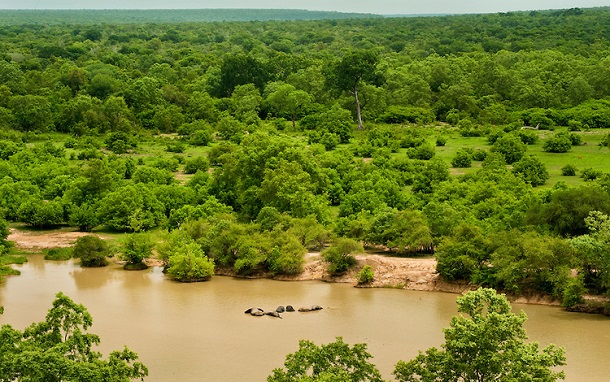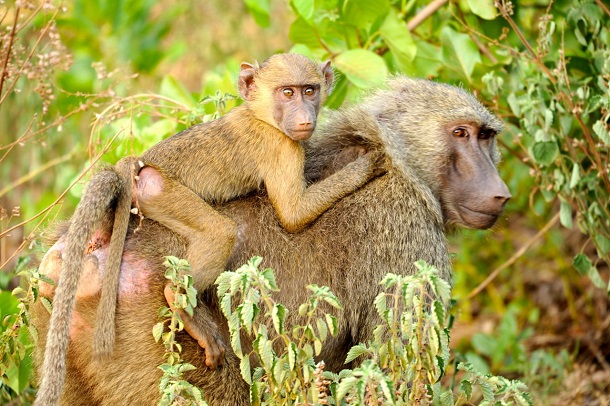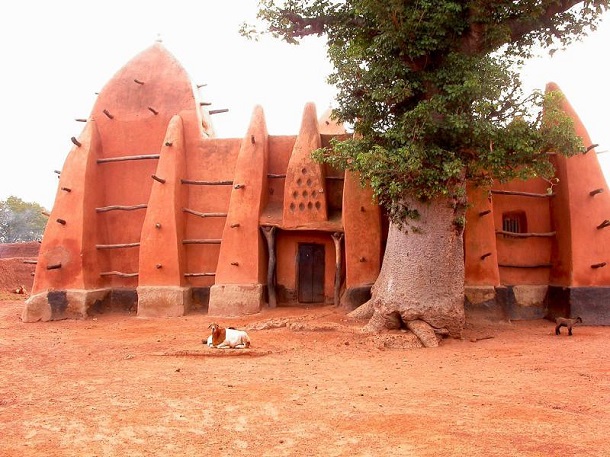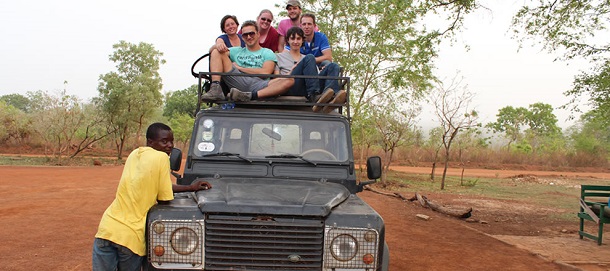The Mole National Park in Ghana over the years has proven to be one of the best wildlife reserve on the African continent dating back as far as pre colonial era in the then Gold Coast now Ghana.
The park is located in the Upper West region of Ghana specifically, on the northwestern on a grassland savanna and riparian ecosystems at an elevation believed to be 150 m, with sharp escarpment forming the southern boundary of the park.
The nearby town to the park is the famous town of Larabanga which also has one of the oldest and wonderful Mosques in Ghana and West Africa in general which can be compared to those in the historical town of Timbuktu in Mali.
The park covers an area of 4,840 km2 of undulating terrain with steep scarps and its beautiful vegetation of pristine Guinea savanna with gallery forests along the rivers and streams in the park.
The park’s land was set aside as a wildlife reserve in 1958 by the first President of Ghana, Dr. Kwame Nkrumah but poachers and encroachers started living around the reserve, making it unable to serve the purpose upon which the land was reserved.
By 1971, the poachers and the encroachers had grown to be a small human population living around the park due to poor enforcement of wildlife laws in Ghana then.
But the then government in that same year took pragmatic measures to relocate the population who had grown a little in numbers to a different place and the land was designated as a national park for wildlife reserve for the Republic of Ghana, with wildlife division established in the area to strictly enforce wildlife laws governing wildlife parks in Ghana.
This indeed brought about a new beginning in the history of the Mole national park which today has stood the test of time in terms of the contribution it has given to Ghana and the West African sub-region.
Over the years, the park has become an important study in the area for scientists because of the removal of the human population from within the park allowing for some long-term studies, in particular, of relatively undisturbed sites compared to similar areas of densely populated equatorial West Africa wildlife areas.
It is believed that one of the findings of the studies done on the park has revealed that resident population of about 800 elephants, for example, indicates that elephant damage to large trees varies with species.
So therefore, it was established that elephants have a greater tendency to seriously injure economically important species of cash trees such as Burkea africana, which is an important tropical hardwood in Africa, and the Butyrospermum paradoxum, the source of shea butter which is also by far, one of the source of livelihood for the people living in northern Ghana.
This study has enable scientists to make a very good generalization in the analysis of wildlife reserve in the West Africa sub-region.
The Beautiful Lovi and the Mole Rivers flows through the park making the centre of the park very fascinating and exciting scene to witness but during the dry season, it leaves behind only drinking holes because of the low rainfall the area receives annually.
The park receives as low as 1000 mm per year of rainfall which indeed is at very low limit considering the nature of the park and the kind of species inhabiting the park but yet still, the park is able to survive this long dry season which normally start from November to May in Ghana.
The park according to statistics, homed about 93 mammal species, and the large mammals of the park include the elephant’s population, hippos, buffalo, hyenas, lions and leopards Zebras and warthogs. But the authorities of the park say it was initially considered a primary African preserve for antelope species including kob, Defassa waterbuck, roan, hartebeest, oribi, the bushbuck, and two duikers, the red duiker and yellow-backed Duiker.
Monkeys too are not left behind among the species in the park and it include Olive baboons, black-and-white colobus monkeys, the green vervet and patas monkeys are the known species of monkeys resident in the park.
As many as 33 species of reptiles including slender-snouted and dwarf crocodile, snake among others are the known reptiles found in the Mole National park.
There are also 344 listed species of birds and some include the martial eagle, the white-headed and palm-nut vultures, saddle-billed storks, herons, egrets, the Abyssinian roller, the violet turaco, various shrikes and the red-throated bee-eater.
A tourist from Romania could not hold what she thought was a magic by how close she came into contact with the elephants, during her visit to the park and she told the NationalTurk tourism team that it was exciting and an adventure for her.
“Quite exciting to have a view of nature at its best in Ghana, I was thrilled by how close we could get to the elephants’’.
For the birds this site gets high marks. It’s absolutely breathtaking to go bird watching in Mole. The kobs, monkeys and wart hogs are present mostly all year round, but still no lions, leopards or hyenas spotted in a while.
Elephants more likely in the dry season but you could get lucky in the rain watching them crossing the dusty roads in the park or sometimes coming to the rest house to relax their huge bodies.
There are local flights from the capital Accra to the northern parts of the country and the few kilometers from the northern regional capital Tamale, can be done in luxury buses to the park.
A motel for visitors is available at the Park headquarters in the town of Mole and parks guards are also available anytime to take visitors and tourists round the park.
The Ghana government is currently leaving no stone unturned in the tourism sector and is calling for tourists from all over the world to patronize Ghana’s tourists attraction sites as the country is force to reckon with in good hospitality in tourism on the African continent.
All in all, Mole national park is a great wonderland of safari and every visitor on tourism mission to Ghana need to see it.
Issaka Adams / NationalTurk Tourism News

